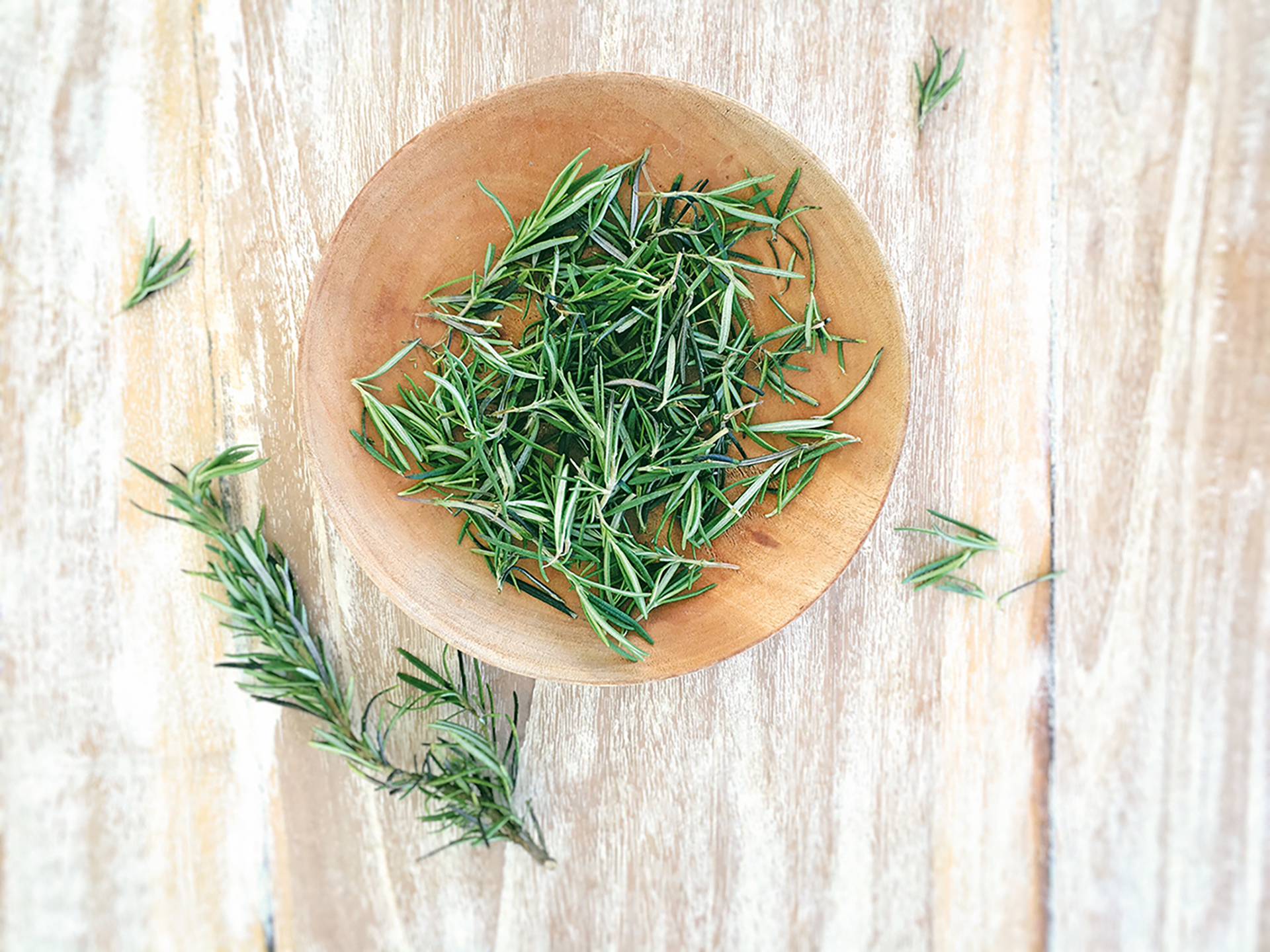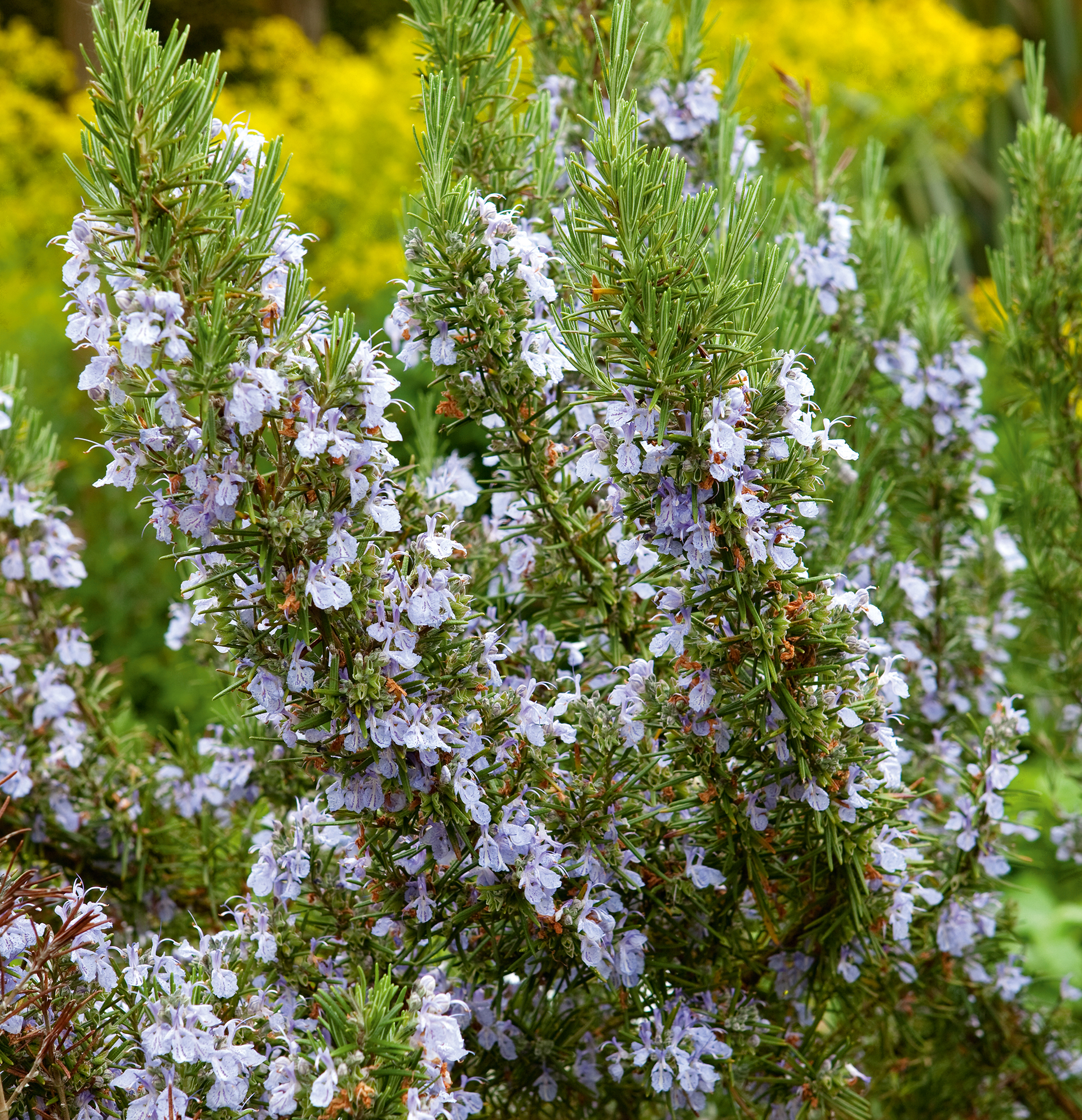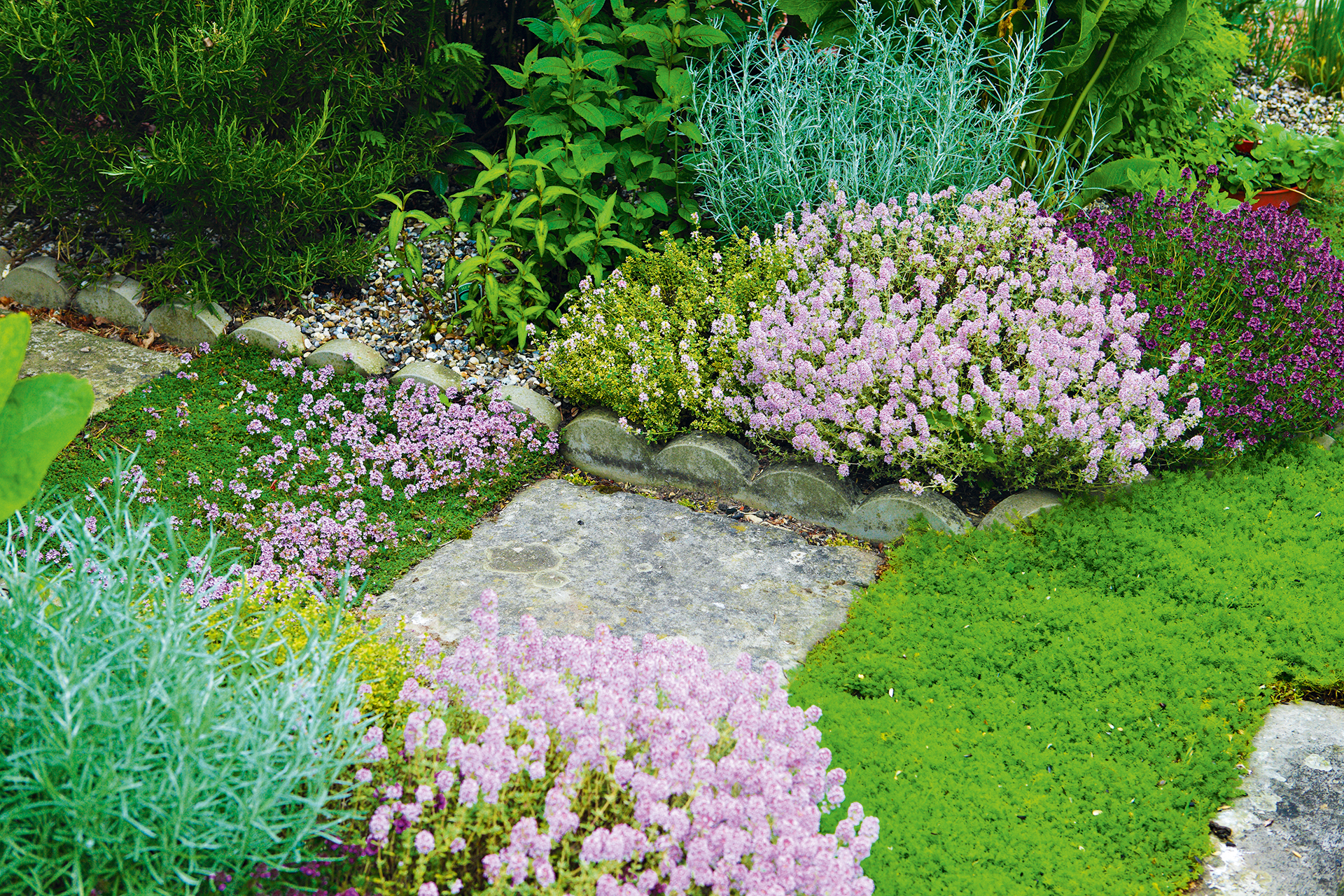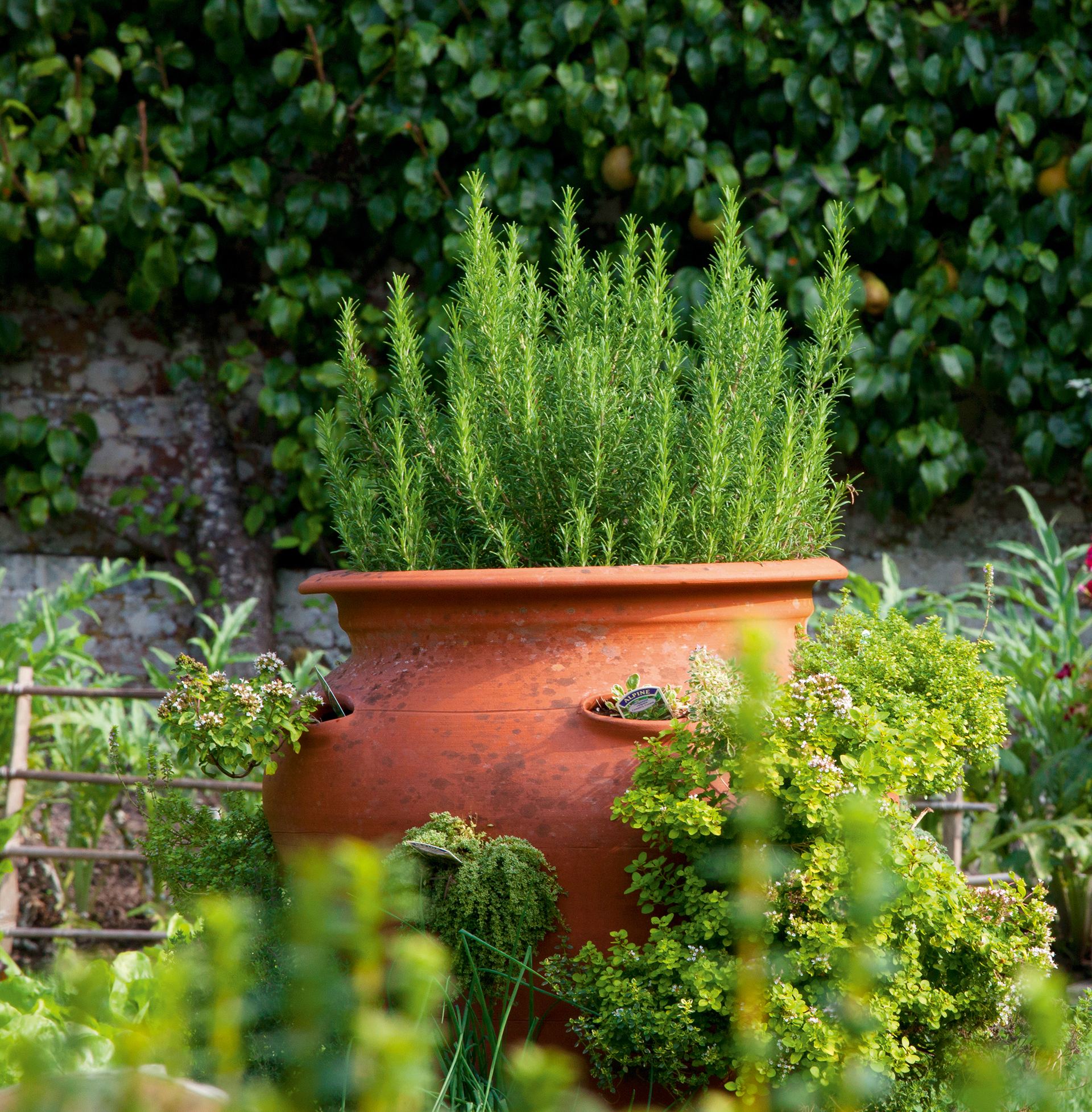How to grow rosemary – from cuttings and from seed, with top care tips
Make your garden a feast for the senses by learning how to grow rosemary. This evergreen herb will become an essential ingredient in your kitchen all year round


Once you learn how to grow rosemary, you'll get so much pleasure out of this wonderfully aromatic and flavorsome plant.
A staple herb for any keen cook, rosemary is also highly attractive to bees and other precious pollinators. So, whether adding one pot of rosemary to the patio, or lining entire pathways, or adding them to your list of herb garden ideas or vegetable garden ideas, cultivating your own plants will provide a feast for all.
'Rosemary is certainly one of the most special and versatile of culinary herbs. It is powerful for flavouring all meat, especially lamb, as well as fish, tomato dishes, beans and lemon sauces,' says Judith Hann in her book Herbs: Delicious Recipes and Growing Tips to Transform Your Food.
'Rosemary can look very beautiful, is trouble free and, once planted, ideally in spring in well-drained soil, will often last for decades.'
There are several types of rosemary that you can grow, but Miss Jessopp’s Upright is a favourite for its looks and taste. Other popular varieties include Benenden Blue, Lady in White, the Prostratus Group, Majorca Pink and McConnell's Blue.
As it's an evergreen shrub, learning how to grow rosemary will keep you in supply of this delicious herb for 12 months of the year.
How do you grow rosemary successfully?

To grow rosemary successfully as part of your kitchen garden ideas, consider the plant’s origins and whether your garden offers the right conditions. Rosemary is native to the Mediterranean, so it should ideally be positioned in a sunny, sheltered spot.
Perhaps surprisingly, rosemary is quite frost-hardy. The plants do, however, need well-draining soil, and are unlikely to thrive in heavy clay or boggy ground.
‘Although it will take temperatures down as low as 5°F (minus 15°C), rosemary absolutely hates sitting in cold, wet soil so sharp drainage is the key to success,’ says celebrity gardener Monty Don in his blog.
If you live in zone 6 or lower, you will need to bring rosemary indoors over winter, or grow it as an annual.
How to grow rosemary from cuttings

Learning how to grow rosemary from cuttings is the best way to cultivate new plants quickly. 'Rosemary is easy to propagate from softwood cuttings,' says Hann.
The best time to take cuttings from rosemary is in the spring, after the plant has flowered. However, many gardeners have had success in summer and fall, as long as the plant is not actively flowering.
Simply cut off shoots with no flowers – you’ll need about 3 to 5 inches – just below a branching point, or leaf node. It’s important to use a sharp, clean blade or secateurs.
If you are not able to immediately plant your cuttings, then you can store them for a short time in a sealed plastic bag out of direct sunlight.
To root your rosemary cuttings, remove most of the lower leaves and push these clean stems into gritty compost containing a high proportion of vermiculite. Either place several cuttings in a larger pot, or in a seed tray, inserting one per module.
Many gardeners first dip the stems in hormone rooting powder to speed up the rooting process, and to ensure more plants are successful. This is not essential, but can increase your chances of stronger, disease-free plants.
Water the freshly planted cuttings, then place in a propagator, cold frame or on a windowsill. Check regularly to make sure the soil is constantly moist and never dries out.
In about four weeks’ time, check your cuttings to see if they have begun to root. To do this, you can give them a very gentle tug, and if you feel resistance it means roots have formed and your cuttings are ready for planting.
Pot them on into individual containers, using loam-based compost. Keep watering, and when the roots fill the container, pot on again to a larger size. The rosemary plants should be ready to plant out into their final positions in the garden the following spring.
See: Small vegetable garden ideas – from layout designs to the best crops to grow
How to grow rosemary from seed

‘Rosemary grows well from seed sown in spring, pricked out into individual pots and planted out the following spring,’ says Monty Don.
Growing rosemary from seed can be a good solution if you are patient and want a lot of plants – perhaps for lining a path. However, germination takes a while and has a low success rate, so sow four times as many seeds as you want plants.
Start off seeds indoors, at least three months before the growing season starts. Use well-draining compost, ideally with plenty of vermiculite or perlite. Moisten the mix, but don’t make it sodden. Sprinkle on the seeds, then cover with a light layer of potting mix. Mist the surface with water and then place in a propagator or cover with a plastic bag or wrap.
As soon as seedlings start to appear, around 14-28 days later, remove the cover. Position the seedlings in a warm spot in direct sunlight, and keep the soil moist.
Once the seedlings are at least 3 inches tall, pot them on or, if the weather is warm enough, plant them out.
How long does it take to grow rosemary?
It takes around a year for a new rosemary plant to go from seed to finished position outdoors. This can be shortened to around six months if you grow rosemary from cuttings. Then, you can harvest rosemary for cooking and drying.
Where does rosemary grow best?
Rosemary grows best in a sunny, sheltered spot, in well-drained soil. ‘Shrubby herbs, such as rosemary, prefer soil that isn’t too acidic,’ says gardening expert Leigh Clapp.
If your soil is heavy clay or is very acidic, then consider growing rosemary in pots, as rosemary is one of the best shrubs for containers.
How to grow rosemary in a pot

'The best way to grow the less hardy varieties of rosemary, especially in cold areas, is in pots,' says Hann.
Choose a pot that is at least 12 inches in diameter with good sized drainage holes.
'Always use well-drained soil wherever you are planting rosemary, incorporating some grit with the compost. Do not overwater and feed only after flowering,' adds Hann. 'You may need to protect them with fleece in freezing conditions.
How do you care for a rosemary plant?
It is very easy to care for a rosemary plant, as long as you have the right soil type, and the temperature doesn't get below 5°F.
Always err on the side of underwatering, rather than overwatering, as rosemary comes from an inherently dry climate. It is a drought tolerant herb that can withstand dry conditions and only needs occasional watering once established.
‘Feed with additional nitrogen fertiliser for good foliage production,’ says Leigh Clapp. ‘It’s a good idea to mulch them to suppress weeds and retain some moisture in summer.'
The main challenges that can affect rosemary are frost damage and rosemary beetle.
Frost damage can be avoided by covering plants with fleece, or bringing them inside over winter. Where damage does occur, cut off the affected stems.
Where rosemary beetle is present, it's best to remove them by hand before they increase in number, as left unattended they can strip plants of leaves. Check plants regularly to see if beetles are present.
Another possible issue is fungal disease, which thrives in moist, humid conditions.
'Help your plant withstand fungal infections by maintaining good air circulation around and through the bush,' says gardening expert John Negus. 'Remove any weeds or leaves and branches of other plants that are touching it, and prune out any straggly old branches within the bush.'
It is beneficial to prune rosemary occasionally. 'It demands little attention, needing a prune only once a year,' says Hann. 'I cut my plants back after the winter flowers are over, but rosemary can also be pruned in the autumn. I grow it as a fan shape against south-facing walls and as a standard.'
Sign up to the Homes & Gardens newsletter
Design expertise in your inbox – from inspiring decorating ideas and beautiful celebrity homes to practical gardening advice and shopping round-ups.

Melanie has worked in homes and gardens media for two decades. Having previously served as Editor on Period Living magazine, and worked on Homes & Gardens, Gardening Etc, Real Homes, and Homebuilding & Renovating, she is now focusing on her passion for gardening as a Senior Editor at Gardening Know How. As a keen home grower, Melanie has experimented with pretty much every type of vegetable at some point – with mixed results. Often it is the simplest things that elude you, which may explain why she just can't seem to master zucchinis.
-
 Bathroom colors going out of style in 2025 – and the designer-approved shades to decorate with instead
Bathroom colors going out of style in 2025 – and the designer-approved shades to decorate with insteadThese are the colors to swerve in your bathroom decor if you want to create a stylish and design-led space, according to experts
By Emily Moorman
-
 I swear by the ‘ETC’ method to prevent clutter and save money – my expert-backed checklist is transformative
I swear by the ‘ETC’ method to prevent clutter and save money – my expert-backed checklist is transformativeNow I Edit The Cart and save time, money, and energy
By Chiana Dickson
-
 Water garden ideas – 9 ways to introduce soothing water to your outdoor space
Water garden ideas – 9 ways to introduce soothing water to your outdoor spaceFrom cascading fountains to wildlife ponds, there are plenty of ways to create a tranquil water garden
By Leigh Clapp
-
 How to grow poppies
How to grow poppiesFind out how to grow poppies to enjoy the beauty of these brightly colored tissue paper-like blooms
By Leigh Clapp
-
 How to grow delphiniums from seed
How to grow delphiniums from seedFind out how to grow delphiniums from seed and enjoy these colorful cottage garden favorites filling beds and borders
By Leigh Clapp
-
 How to grow ferns – when and how to plant and care for them
How to grow ferns – when and how to plant and care for themLearn how to grow ferns to enjoy the texture and form of these versatile plants in many areas of your garden
By Leigh Clapp
-
 How to grow sweet peas from seed – in borders and pots
How to grow sweet peas from seed – in borders and potsFind out how to grow sweet peas and where to enjoy their wonderful color, ruffled blooms and sweet fragrance in your garden
By Pippa Blenkinsop
-
 How to make fat balls for birds – easy steps feed our feathered friends
How to make fat balls for birds – easy steps feed our feathered friendsLearn how to make fat balls for birds to ensure their wellbeing throughout the winter
By Holly Reaney
-
 Planning a kitchen garden – from layouts to picking the best crops
Planning a kitchen garden – from layouts to picking the best cropsPlanning a kitchen garden is easy with this expert advice – whether yours is in beds, borders or a dedicated patch – you're guaranteed success
By Leigh Clapp
-
 How to grow cosmos – expert tips on when and where to plant these flowers
How to grow cosmos – expert tips on when and where to plant these flowersLearn how to grow cosmos to add bright color in your garden from summer through to fall with their beautiful blooms
By Leigh Clapp